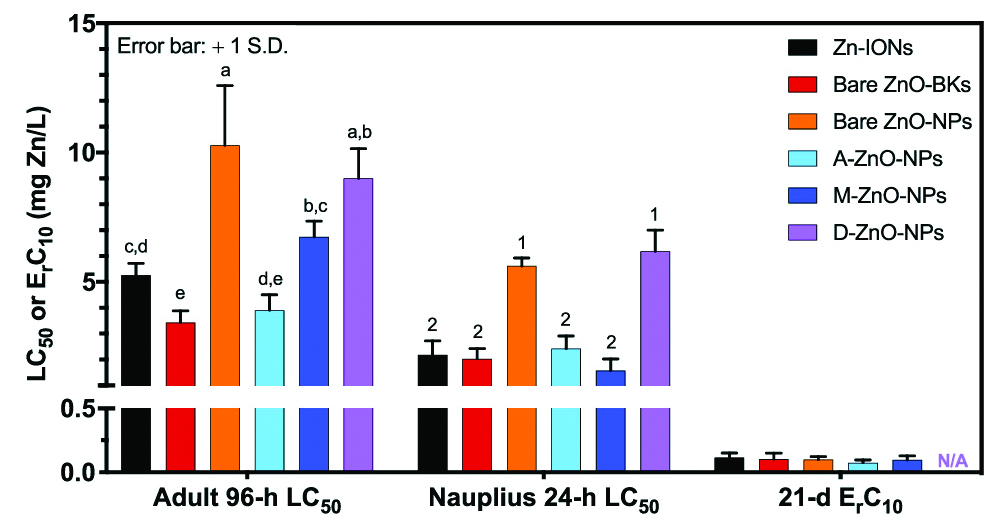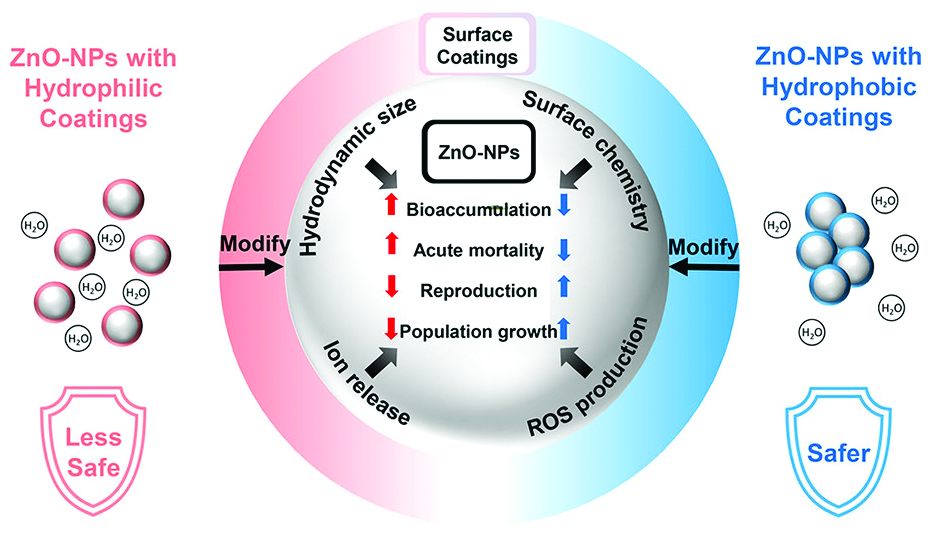Involved Members: Prof. Kenneth Mei Yee LEUNG, Prof. Xiaoyan LI
Current toxicity assessment of zinc oxide nanoparticles (ZnO-NPs) seldom considers the impacts of surface modification while it is a common practice in commercial products. Therefore, we evaluated the toxicities of ZnO-NPs with three different silane coatings towards a marine copepod, Tigriopus japonicus. ZnO-NPs with more hydrophilic coatings were found consistently more toxic than the hydrophobic one, likely because the coatings could affect agglomeration and ion dissolution of ZnO-NPs, eventually increasing their bioaccumulation and toxicity. The meta-analysis further suggested that the toxicity of coated nanoparticle could be predicted by the hydrophobicity and density of their surface coatings. These findings will be beneficial to the future development of eco-friendly nanoparticles by surface modification.
Reference:
Lai, R.W.S., Kang, H.M., Zhou, G.J., Yung, M.M.N., He, Y.L., Ng, A.M.C., Li, X.Y., Djurišić, A.B., Lee, J.S. & Leung, K.M.Y. (2021). Hydrophobic surface coating can reduce toxicity of zinc oxide nanoparticles to the marine copepod Tigriopus japonicus. Environmental Science & Technology, 55, 6917-6925.

